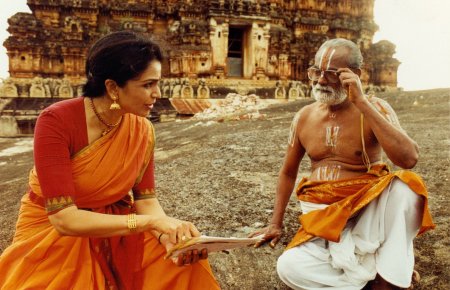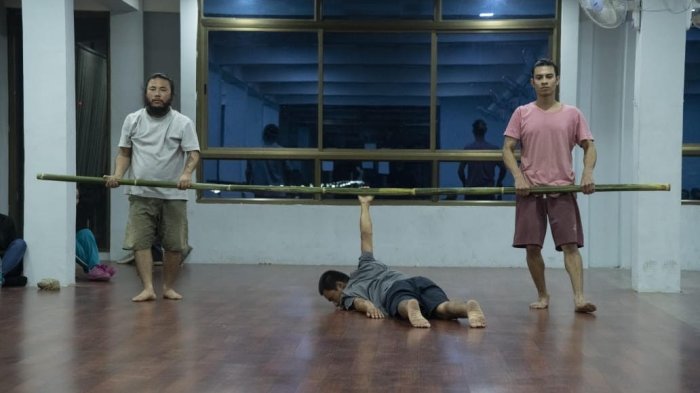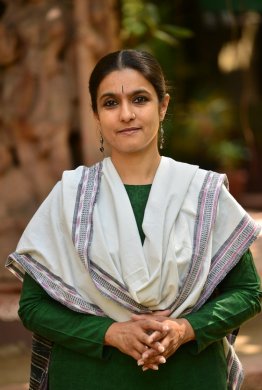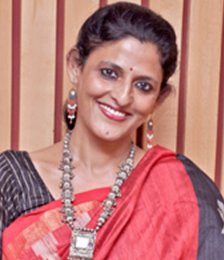
|
 |

|
 |
Emerging cultural economics in dance - Navina Jafa e-mail: navina.jafa@gmail.com February 22, 2021 (The theme was earlier commissioned by The Hindu, and the article repositions the wider frame of argument presented in the version earlier published. The main issue being initiatives by dancers to envision sustainability for performing communities and individuals beyond their own selves and their individual 'company' in the present challenging circumstances.) The dancers in India have endured economic and sociological existential challenges during the Covid pandemic. Classical/ folk in urban and rural geographies have adopted imaginative journeys to revise, reconstruct, reinvent, re-educate, and reposition to align with emerging modernity. A new dynamic is the fast emerging parallel existence of a vibrant online with a limited and shrinking space of presenting dance and performing arts offline. The other issue is the manner cultural leaders in dance engaged in the performing arts are going beyond themselves and their organization. The matter is on the manner these cultural leaders are creating new dance networks to build and reposition in the changing times by providing hope, sustainability and second how these same leaders in performing arts are stretching to contribute to the performing arts to other performance communities. Crucial in the discourse is bringing models that present hope towards sustainability of performing arts and artists. There has to be cognition of creating realistic frameworks that reflect strategies to reconnect with markets and are mindful of new audiences (consumers) in the dual existence of off and online performative spaces. More than ever, it is not about the formal creative industry but the large non-formal creative sector and therefore, about sustainable cultural economics. The importance is also about recognizing that the largest sector of the potential target audience is under fifty and is online and not offline. Hence, even when the real performance spaces open, the maximum space that will remain attractive for funding and sponsorship will remain online. That is not to say that astute planned strategies of market connectivity will not occur offline. Fascinating are examples one each from South - dancer, producer Anita Ratnam, contemporary dancer Surjit Nongmeikapam (Bonbon) from Manipur, and dancer and thinker on dance Parwati Dutta from Aurangabad, Maharashtra - their work during the lockdown, a few initiatives that were new and some in the continuity of the past, present paradigmatic models of emerging cultural economics of performing arts.  Anita Ratnam Anita Ratnam comes from a business background and a first-generation professional dancer who grew up in an environment about balance sheets, profit-loss, products. "My first experience of cultural economics was in the 1980s when I was the only television producer to present events surrounding the Festival of India in The United States." She also refers to the intriguing journey of her Guru Adyar K Lakshman. "In the 1980s, he acquired the backing of the affluent Tamil diaspora, especially the Sri Lankans spread across Australia and Canada. Lakshman Sir," she says, "was well networked with the Tamils in North Sri Lanka, and at the height of the Lankan insurgency, the diaspora endeavoured to preserve their identity by patronizing cultural learning, especially of the arts." The reference to the diaspora provided the first window to identifying market connectivity in Ratnam's model. Through the COVID, she initiated online thematic programs to include young dancers and present them with opportunities to experiment with technology and its aesthetics leading to an organic viewership of the programs on Narthaki.com. The study showed audiences were young, and performers' relay was a mixed bag of classical, contemporary, Indian, and non-residents. The first one, titled 'Boxed' was a commissioned program. "It provoked young dancers to play with their homes' limited space in the Lockdown's peak minimally, with their technical aesthetics and their clothes. We kept in mind their lack of comprehending and dealing with light, placement of the camera, and much more. There was a lot of hand holding." In comparison, she adds, "The recently concluded series 'Andal's Garden' encouraged dancers to explore outdoor spaces where the notion of experiences of light, less elaborate costume has drawn them to explore abhinaya and technology in natural environments." With organic growth of viewership on online social media platforms, a straightforward upward graph of a quantitative audience where upgraded skills in sync with technology provide an attractive model for creating cultural economics. Ratnam's efforts interestingly present a lesser known area of performing arts and economics linked with rural Tamilnadu. She started traveling almost 25 years ago to reconnect with her ancestral village Tirukurungudi in Tamil Nadu. Her grandfather was the last patron of the folk-ritual theatre Kaisika Natakam in the village temple. Ratnam initially aspired to recover and document the tradition and fractured collective memories of tradition bearers under her NGO Arangham. "Funding, unlike my urban projects, was easy. Business families became stakeholders to revive their cultural heritage that includes the splendid temple architecture." Gradually, using physical bodies that belonged to the cultural geography, Ratnam provided an impetus to the revival of the art-form and village tourism. "Today, local festivities linked with the temple attract tourists and pilgrims from different parts of India and elsewhere to the village that was acclaimed as Tamil Nadu's cleanest village in the Swachh Bharat campaign, a growing cultural heritage economy. That is my effort to create inclusivity," says Ratnam.  Surjit Nongmeikapam's Nanchong Art Foundation Photo: Joy Khwairakpam In contrast to Anita Ratnam, both Surjit Nongmeikapam and Parwati Dutta belong to a middle class background and are also first generation dancers. Surjit Nongmeikapam delved in honing not the classical Manipuri dance but traveled to Bangalore to learn Kathak and contemporary dance at Maya Rao's Natya Institute of Kathak and Choreography. "The Covid pandemic threw up challenges to grapple with crises of survival. At the same time, I reached out to several individuals and organizations for donations, many of them from my international circuit to feed performing artists in my organization, Nanchong Art Foundation." In this manner, Surjit renewed connections with patrons and strengthened stakeholders to support his work. The thematic importance of life and the power of Nature compelled him to rethink and reposition. "I work with 9-10 creative professionals - dancers, writers, martial artists, musicians. The contemporary is not a recognized genre, but in the Lockdown, I got online opportunities in webinars and festivals." He performs on occasions both on and offline, the well received 30-minute production '1 Sq Ft' inspired by Manipur's haplessness during WW II. The production conveys the dilemma of human displacement, shrinking land for human existence - a powerful argument on war and violence. Nongmeikapam's work is perceptive, not abstract but political acrobatically balancing contemporary aesthetics. In the case of Nongmeikapam, the target audience remains young but similar to the market for contemporary visual art, his is the market for the educated, urban, and thinking consumer. Therefore, even offline, it was not surprising that this piece was part of 'ArtEast' in 2019, curated by Kishalaya Bhattacharjee, raising questions through intersecting discourses between the arts' critical thinking on burning matters like environment and social justice.  Parwati Dutta Parwati Dutta grew up in Bhopal but started her work in the completely unknown cultural terrain of Aurangabad city in Maharashtra. "I built from ground zero, my institute Mahagami Gurukul and also partnered with the Mahatma Gandhi Mission." The pandemic dynamics motivated her to involve her patrons who participated in her intellectual and performance activities before the Lockdown. "I understood the impact of my work when citizens of Aurangabad eagerly supported my donation campaign for artists and continued to be a part of my online intellectual discourses on the arts. I focused on the pandemic's psychological impact in the talks provided for artists and non-artists, a common ground to create a unique bond through the arts. Such was the influence on the community linked to Mahagami that one engineer was inspired to create a dictionary on sculpture- ShilpKosh," she described. Further, like Ratnam, Dutta created an outreach program in a rural area called 'Baagh Talaaw' for several years. A few kilometers away from the city of Aurangabad, this area comprises settlements of itinerant grazers. "During COVID, with the assistance of our patrons, there was citizen participation in augmenting the value of folk performers and their art forms in the area, along with providing electronic gadgets for survival. Cultural economics is about investing in creating local patronage by building a sense of ownership. That is the way forward. My belief is creating tastes among audiences. Their support in the pandemic indicated their involvement and illustrated that they are part of our larger family." The candid interviews with the dancers displayed the importance of the large number of performers living on the margins and the civil society initiatives. Nongmeikapam moves ahead with his local creative, grassroots professionals reaching out to Indian and international thinking audiences and organizations. Parwati's model focuses on local sustainability and inclusivity of creating local cultural ecologies. In contrast, Ratnam's model provides platforms and technical experience for dancers nationally and internationally on the one hand. Simultaneously, her work in rural areas addresses sustainability for artists, pride for patron stakeholders, and a holistic rural cultural tourism model. The belief in the emerging cultural, economic dynamics online and offline is the intensity of 'content,' the focus on technology, and realistic comprehension to identify local markets and audiences. The cultural, economic models presented in Anita Ratnam, Surjit Nongmeikapam, and Parwati Dutta exemplifies hope and diversity of approach to sustain performing arts and intangible heritage ecologies. The COVID perhaps is a point of reflection and reinvention echoing the words of poetess Elizabeth Bishop. "The art of losing isn't hard to master; so many things seem filled with the intent to be lost that their loss is no disaster. Lose something every day. Accept the fluster of lost door keys, the hour badly spent. The art of losing isn't hard to master..."  Navina Jafa did her Phd on socio-economics, and aesthetics in the world of Kathak Dance in 6 urban towns of North India under Dr. Kapila Vatsyayan and urban historian Prof. Narayani Gupta. She learned Kathak from Gurus Pt. Birju Maharaj, Munna Shukla and Reba Vidyarthi. A Fulbright scholar at the Smithsonian Museum, she worked on cultural management and diplomacy. She runs a business on Academic Tourism and is vice president of Centre for New Perspectives presently working to create sustainable livelihoods for marginalized street-folk performers. Post your comments Pl provide your name and email id along with your comment. All appropriate comments posted with name & email id in the blog will also be featured in the site. |